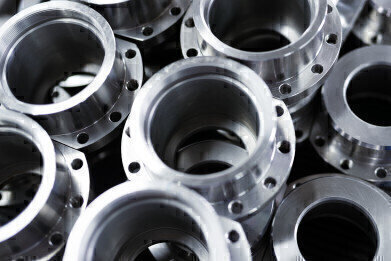Mass spectrometry & spectroscopy
New Advances in XRF Technology Allow for Measurement of Electroless Nickel Plating
Mar 13 2018
Electroless nickel (EN) plating was introduced over 50 years ago as a means to provide lightweight materials for improved fuel efficiencies, greater corrosion performance and durability. Quickly implemented into the automotive, aerospace and transportation industries, it was also seen as an alternative to plating with chrome, because of its ability to meet engineering requirements for environmental legislation. EN applications have been widely accepted in today’s transportation industry for parts such as: gear assemblies, bearings, fuel injection systems, aluminium fuel filters, break pins and valve bleeds. Another significant advantage of EN is its ability to produce deposits in uniform thickness even if the piece has complex shapes and geometries. Microspot X-Ray Fluorescence (XRF) for Quality Control and Screening of a Plating Process.
XRF instruments have been a field-proven technique to determine elemental composition and coating thickness for bulk materials and relatively large features. Becoming increasingly specialised to address more demanding analytical requirements, today’s microspot XRF instruments measure small features and samples by reducing a large primary X-ray beam down to the micrometre scale. This enables measurement of more complex applications, including alloys coatings and multi-layer coating systems. Microspot XRF is an ideal testing method because it provides non-destructive measurement of thickness and composition. It takes only seconds to obtain accurate, repeatable and real-time analysis without the use of chemicals or purge gases. Determining Coating Thickness and Chemical Composition Simultaneously
Advances in microspot XRF, such as high-definition silicon drift detectors (SDD), have also made it possible to measure both nickel and phosphorous content directly under air path allowing for both the coating thickness and chemical composition to be determined simultaneously. Microspot XRF has become a key means to provide critical coating thickness analysis for quality control throughout the EN process. It helps to provide a precise measurement of the deposition when the desired outcome is to produce an alloy of nickel and phosphorus in varying ratios. Since the physical and chemical properties of EN are crucially dependent on the underlying phosphorus content (%P) it is important to verify the phosphorous concentration, in order to ensure a homogeneous coating thickness distribution and achieve the targeted phosphorous content accordingly. XRF serves as a catalyst for engineers devoted to quality control/assurance standards for the measurement of coating thickness at any stage of the plating process, from incoming inspection to final quality check. Use of XRF analysis throughout the plating process can provide benefits, such as, cost optimisation and conformation of compliance to standards. It also helps to guarantee smooth functionality and longevity of the finished assembly or product. Most importantly, XRF analysis can assist manufacturers to avoid costly recalls of components and products, and it can save a company from irreparable damage in the face of product failures.
Most recently added is the high performance FT150 analyser featuring a polycapillary optic with a beam size of <20 µm, offering non-destructive, precision analysis of electroless nickel coatings found in the electronics industry. Its robust, versatile design is suitable for the most challenging of industrial conditions.
For further information on Hitachi High-Tech’s coatings products, please go to our website.
Digital Edition
Lab Asia Dec 2025
December 2025
Chromatography Articles- Cutting-edge sample preparation tools help laboratories to stay ahead of the curveMass Spectrometry & Spectroscopy Articles- Unlocking the complexity of metabolomics: Pushi...
View all digital editions
Events
Jan 21 2026 Tokyo, Japan
Jan 28 2026 Tokyo, Japan
Jan 29 2026 New Delhi, India
Feb 07 2026 Boston, MA, USA
Asia Pharma Expo/Asia Lab Expo
Feb 12 2026 Dhaka, Bangladesh



















